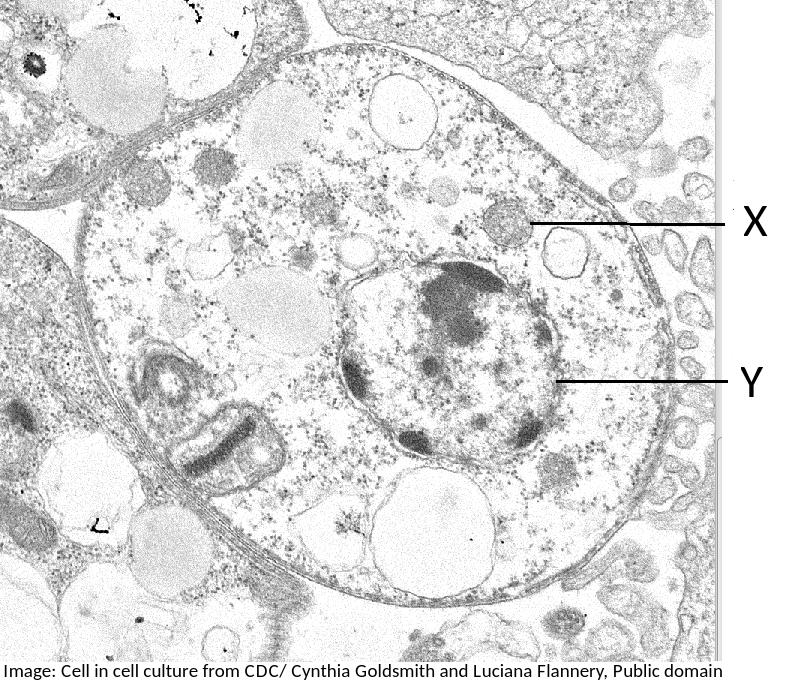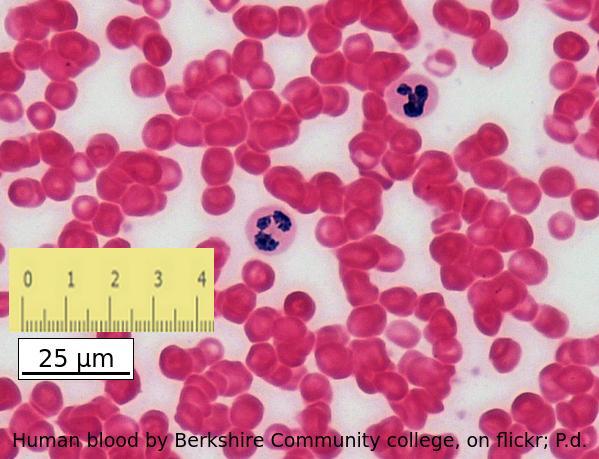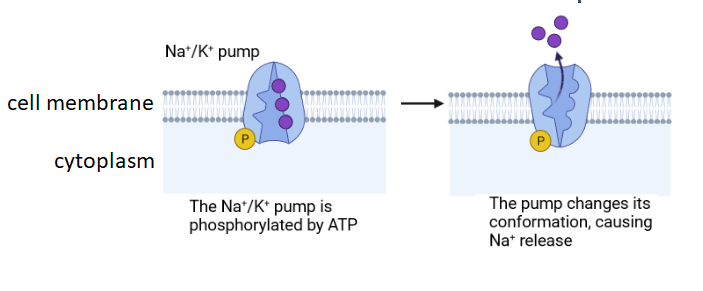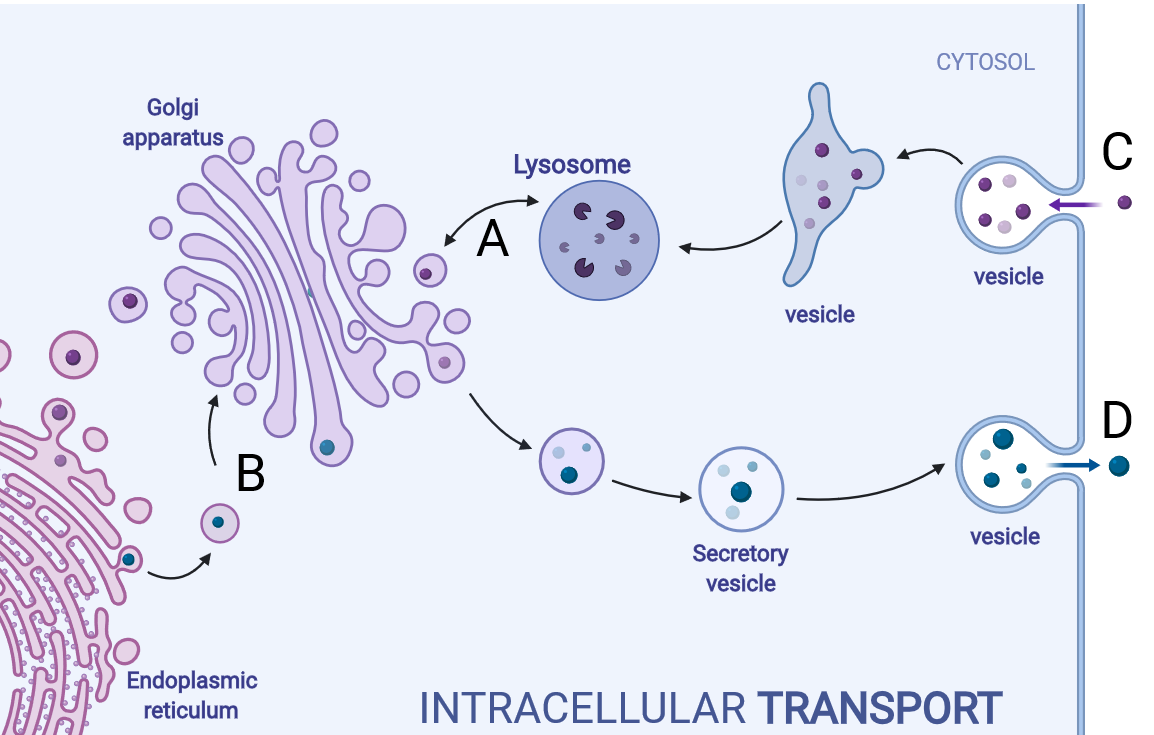Topic 1: Cell biology 
This page contains multiple choice questions in the style of Paper 1 of the Biology exams.
They test the breadth of your knowledge of the understandings and skills about cell biology.
To spend more time reviewing the topic before answering these questions, use the revision resources.
Cell biology revision resources
This page lists the understandings and skills expected for Topic 1 and links to the sub-topic pages which contain detailed revision notes, activities and past paper style questions. Great for revision.
Learn from any mistakes. Every question has an examiner's explanation that appears when you check your answers.
Pasteur's experiment with 'swan neck' flasks showed that a sterile nutrient medium exposed to the air would not show any signs of bacterial growth under his conditions.
What prevented the growth of bacteria?
Pasteur's famous experiments with swan neck flasks showed that broth kept in a flask where no dust could settle in the nutrient medium, and thus no living cells could get in, would not go mouldy.
This disproved the theory of spontaeous generation.
What effect does reducing the amount of cholesterol in a cell membrane have on its properties?
Cholesterol is a component of animal cell membranes. Application: Cholesterol in mammalian membranes reduces membrane fluidity and permeability to some solutes.
What are the structures labelled X and Y likely to be in this electron microscope image?

Students are expected to be able to identify organelles from microscope images of cells. The nucleus is distinctive because it is about 10µm in size, and it has black dots in it, chromatin, and sometimes one or more dark patches within the nuclear membrane. It also has a double membrane, not often easily visible.
What is the term used to describe the smallest distance which two objects can be seen as separate objects in a microscope?
The resolving power, or resolution, is the ability to separate objects, to produce separate images of two objects.
The 'Cell theory' explains the nature of living things.
Which statement best describes Cell theory?
According to cell theory, living organisms are composed of cells.
Cells come from pre-existing cells and cells are the smallest using of life.
The image below shows erythrocytes and leucocytes.l.

Using the scale bar and the ruler placed on the image, estimate the magnification of the image.
Which answer is the best estimate
Calculate the magnification of an electron microscope image from a scale bar?
Convert the ruler measurement to the same units written on the scale bar, in this case 25mm is 25000µm
then divide the ruler measurement 25000 by the number on the scalebar, 25.
Explain the significance of the following terms in Biology; Metabolism, response, growth, reproduction, excretion, nutrition, homeostasis.
Remember MR H GREN. These letters represent the seven characteristics of living things.
Stargarts disease, which causes loss of cells in the retina can be treated using a special type of human cell.
Which of the following is used because it is still able to differentiate?
Stem cells can differentiate and become specialised cells.
They often take on the features of the cells around them.
Rod cells, cone cells, and erythrocytes are specialised cells and cannot differentiate.
Which of the structures listed below are involved in membrane transport?
Many transmembrane proteins are involved in transport of molecules across membranes. These can either provide a sort of molecular pore through which ions or molecules can pass (facilitated diffusion), or they can use ATP to actively move molecules, even against the concentration gradient (active transport).These are just two examples, transport can also occur by simple diffusion through the phospholipid bilayer, or by endocytosis.
The diagram shows the transport of sodium ions across a membrane.

Which explanation gives the best description of the type of membrane transport shown?.
Facilitated diffusion does not require energy from ATP so this process is active transport. It can move sodium ions against the concentration gradient, but this is not always the case.
Which label in the image below shows the process of endocytosis?

Endocytosis is the process where a substance is surrounded by the plasma membrane which forms a vesicle inside the cell that then moves into the cytoplasm, separating from the plasma membrane.
Which phrases most accurately describe a multicellular organism?
Comment: The multicellular condition allows for differentiation into cells of different types and also replacement of cells when injured or damaged.
The diameter of this field of view under a microscope at X400 magnification is 250 μm.
The image below shows Dracaena leaf upper epidermis cells.
Which is the best estimate of the width (from left to right) of an epidermal cell?
Comment: There are approximately 8 cells across a diameter so 250/8 = 33 μm.
Beware of the units, mm are 1000 times bigger than µm.
Which of the following are methods by which molecules can move across membranes?
I. Simple diffusion
II. Facilitated diffusion
III. Cytokinesis
IV. Active transport
There are actually four types of membrane transport which are required in DP Biology, Simple diffusion, facilitated diffusion, osmosis and active transport.
Which organelle is visible in an electron microscope but not in a light microscope?

The ribosome is too small to be seen in the electron microscope, the other organelles were seen in the light microscope before the electron microscope was invented.
Which means of transport across a plasma membrane requires the molecule shown in the picture?

Which process is involved in white blood cells engulfing bacteria (arrowed in the photomicrograph)?

White blood cells engulf bacteria by endocytosis, the intake of solid particles by a cell membrane.
What is the sequence of events that occur in a cell that is secreting a protein hormone?
1 Exocytosis
2 Vesicle formed by Golgi Body
3 Fusion of vesicle to plasma membrane
4 RER manufactures protein.
Ribosomes on the RER manufacture protein. This is packaged in vesicles by the Golgi Body and moves to the surface of the cell where the vesicle and plasma membrane fuse and exocytosis of the protein occurs.
Louis Pasteur used sterile broth and swan necked flasks to disprove which theory?

Pasteur demonstrated that broth would go cloudy only when air was allowed to contact the broth, bringing microbes. He disproved Spontaneous Generation.
A mitotic index taken from this microphotograph only would not be regarded as valid. How can a valid count be made?

Refresh this page to try a new set of 20 multiple choice questions. The questions will be different next time you visit. Great revision.

 Twitter
Twitter  Facebook
Facebook  LinkedIn
LinkedIn